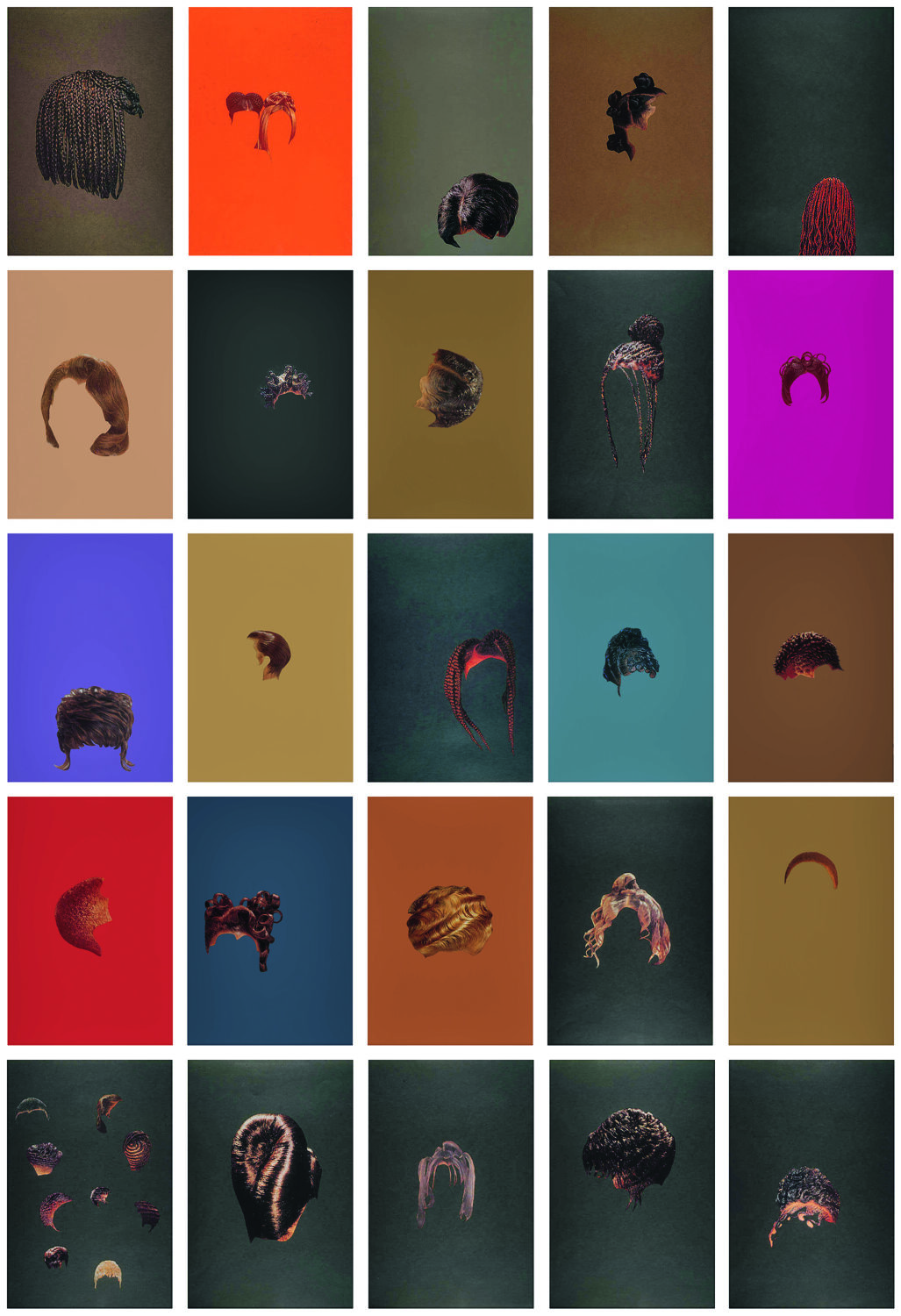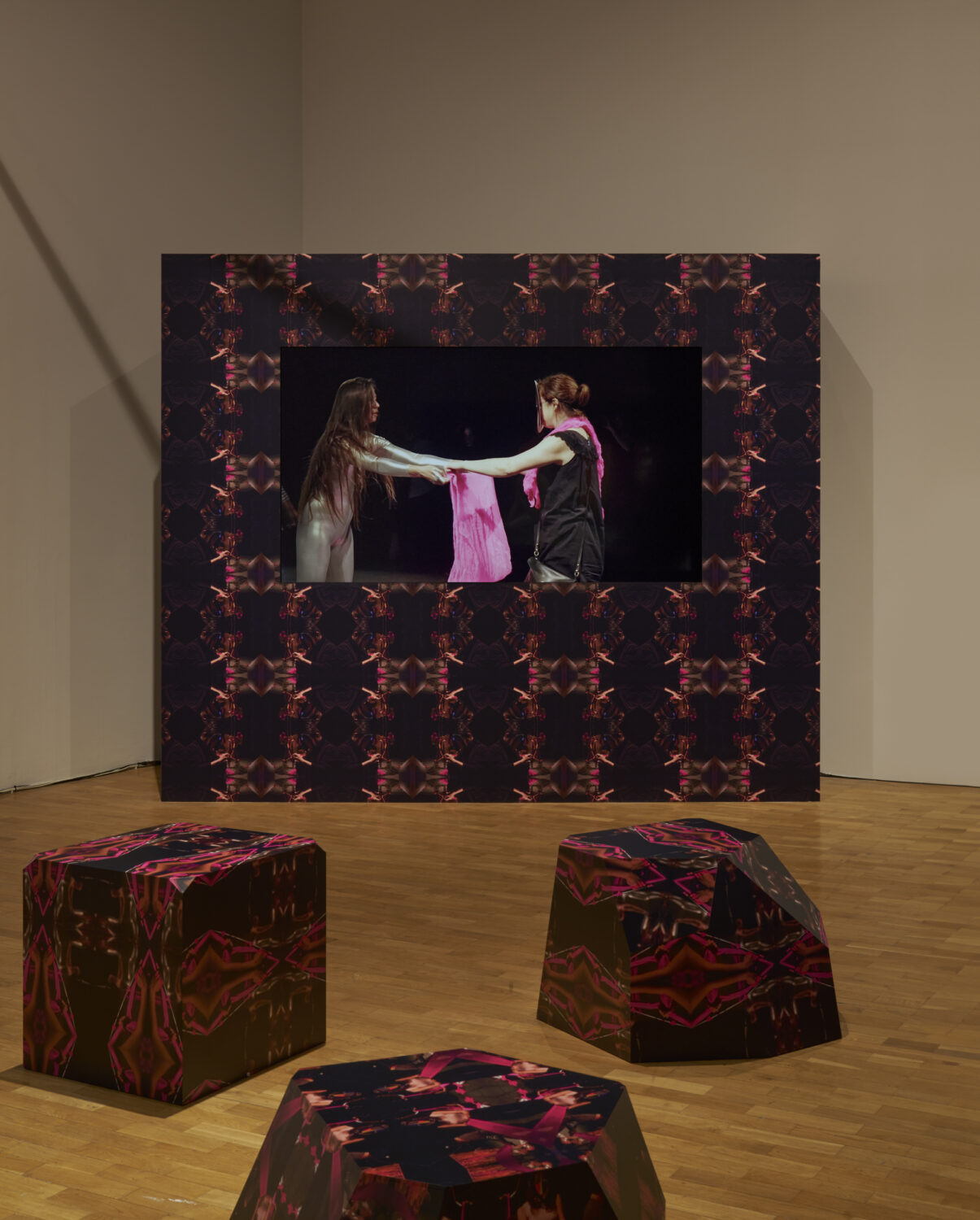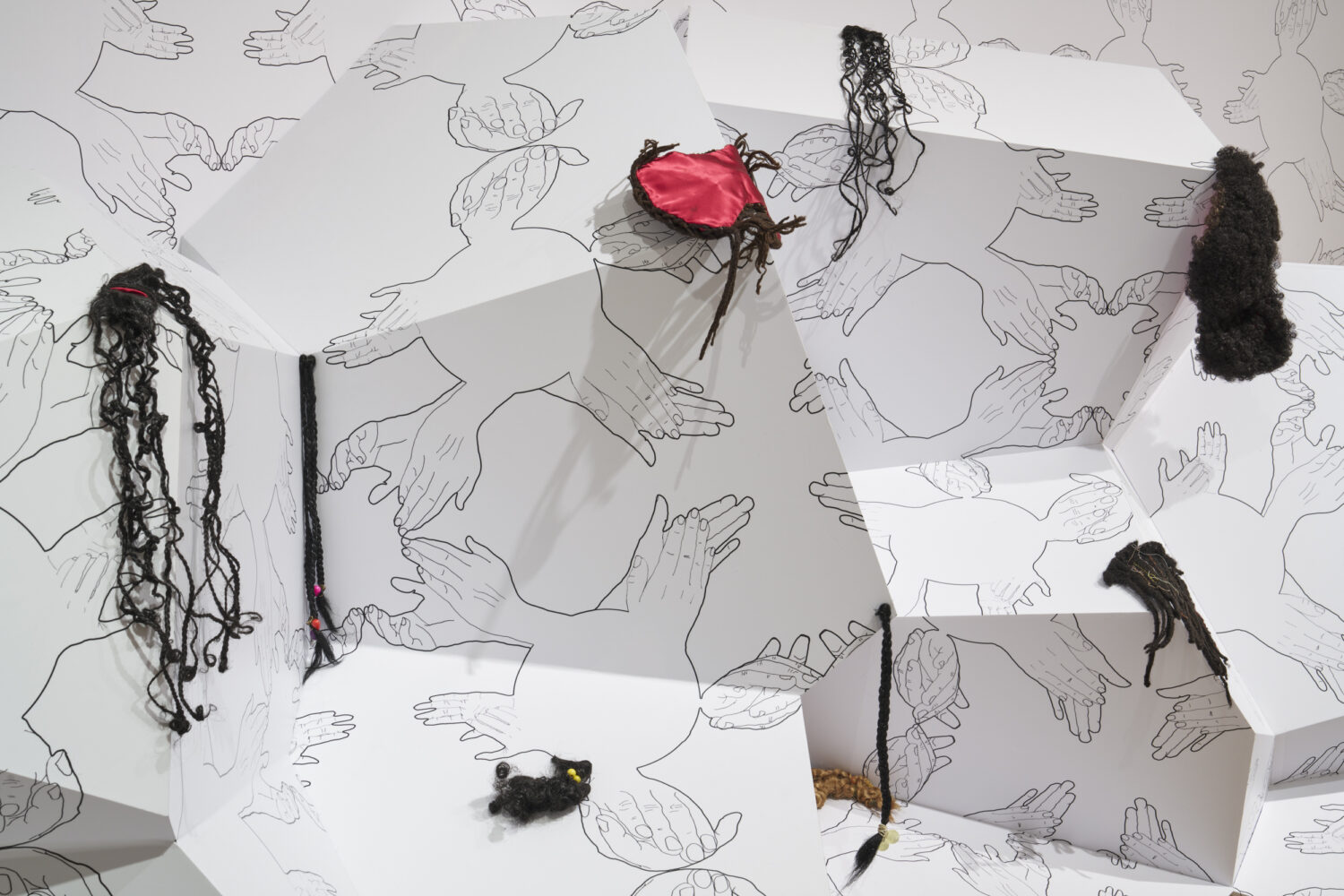Sonia Boyce Wants Us to Take Play More Seriously
By Hannah WoodsBritish Afro-Caribbean artist Sonia Boyce (b. 1962, UK) has been a well-known figure in the British art scene for four decades, but her new exhibition at Whitechapel Gallery aims to tell the lesser-known story of her artistic journey. An Awkward Relation affords Boyce a rare opportunity to pause and look backwards at a key turning point in her practice.
Boyce first became known in the 1980s for her large pastel drawings that explored Black female identity (see She Ain’t Holding Them Up, She’s Holding On (Some English Rose), 1986). The show at Whitechapel positions the performative as foundational in her practice. Boyce has said her dream growing up was to be part of the experimental performance group the Michael Clark Dance Company, exemplifying her early interest in working with multiple disciplines and people. The exhibition shows how Boyce has always wrestled with and gone beyond the surface of the picture plane by working with sculpture, film installation, surface-printed wallpapers (a key component of her practice and homage to British Afro-Caribbean households), and performance.

Boyce was introduced to the work of Brazilian artist Lygia Clark in the mid-1990s – first seeing her work at Whitechapel Gallery as part of Catherine de Zegher’s iconic exhibition Inside the Visible (1997) – and felt a strong synergy with her practice. It was around this time Boyce began inviting both audiences and fellow artists to participate in the creation of her work as a way of expanding the relationship between artist, artwork and audiences. Many artists were turning to performance at this time and bringing audiences into their artworks (a trend which Nicolas Bourriaud famously categorised in 1998 as ‘relational aesthetics’ – an argument that Boyce has dismissed as ‘romantic’), but Boyce’s choice of Clark as a role model is notable. Boyce has stated, ‘I feel much more aligned to Lygia Clark because she talks about the messiness and traumas that lie within relational and object encounters…the imagination and the mess and the fearful desire to come together; to be an ensemble’. Boyce’s process is all about this messiness and fear; she does not direct the work to form in a particular way, but encourages the risk of inviting people in.
An Awkward Relation explores these feelings of uneasiness which arise from inviting others to engage, touch and experience artworks in unscripted ways, with the exhibition title indicative of the complex relationships that occur in participatory practices. It also speaks to the relation between Boyce and Clark: Boyce’s exhibition has been especially conceived to be in dialogue with a retrospective of Lygia Clark showing at the Gallery concurrently (the first major exhibition of Lygia Clark in a British public gallery). The title also recognises the awkward relation towards Clark for Boyce – while there are similarities in their work, there are clear differences stemming from their very different artistic, geographical and socio-political contexts, as well as their intent.

The first section of Boyce’s exhibition provides a meeting point for the two artists’ practices, a space to explore the intersection of the two artists. Subsequent sections bring together a selection of pivotal and rarely seen works from Boyce, which explore themes of interaction, participation and improvisation, providing insight into how her practice has developed over the past 30 years.
It’s particularly exciting to be able to include the Hair Objects that Boyce made in the 1990s. At Whitechapel we are showing over 20 pieces made with real and synthetic hair, originally included in the Do you want to touch? exhibition at 181 Gallery, London in 1993. Boyce made around 50 of these objects in the early 1990s whilst living and working in South London, buying the material whilst walking past hair shops in Brixton and braiding it into forms at home in her kitchen. She was fascinated by the hair forms but admits she also found them ‘troubling’, with the objects speaking to the violation of being touched. The works confront deeply seated desires and assumptions, with visitors invited to touch and respond to the display (at 181 Gallery, several of the pieces got ruined).

The second gallery space continues to demonstrate Boyce’s fascination with hair as both a material and cultural signifier, bringing together a selection of Boyce’s works from the 1990s to the present day. The works are not presented chronologically but in dialogue, layered on top of one another like a collage, to show how Boyce has returned to themes and imagery over time. Black Female Hairstyles (1995), 50 collages of Black women’s hair, sought and cut from magazines, demonstrates Boyce’s continual search to ‘make sense of Black female representation’ (exemplified by Feeling Her Way [2021-2024] and her Devotional collection [1999 -]). Exquisite Tension (2005), a video of two strangers being joined by their hair, is emblematic of Boyce’s desire to create and interrogate uneasy dynamics. The entangled duo sits silently in discomfort – Boyce tells me that the pair have since been good friends. Boyce’s experimental enquiries playfully speak to experiences of fragmentation and awkward relations, underscored by questions of race and gender.
The last section of the exhibition is dedicated to We move in her way (2017), a 7-channel film installation work that developed out of Boyce’s original performance of the same name, held at the Institute of Contemporary Arts, London in 2016. Performers from different disciplines (music, textiles, dance) were invited to improvise and to interact with the attending audience (who can be distinguished by their masks). The performance was inspired by Lygia Clark’s work from the late 1960s–70s and also references the Dada artist Sophie Taeuber-Arp (1889-1943), drawing on Boyce’s interest in the intersection of Dada, jazz and improvisation. The installation spans two gallery spaces, meaning the audience cannot see all of it at once and is obliged to perform their own choreography across the two spaces.
An Awkward Relation aims to provide a rare insight into Boyce’s mind, but also to make audiences stop and play, an activity that Boyce describes as ‘very serious business’. It feels apt to host this exploration at Whitechapel Gallery, the space where Boyce visited frequently as a young person living off Brick Lane, and first encountered Clark’s work. It’s also an opportunity to appreciate and join in with Boyce’s collaborative artworks: Boyce reminds us just how much pleasure there is to be had in the serious business of play.
Feature image: Sonia Boyce, Exquisite Tension, 2006. © Sonia Boyce. All Rights Reserved, DACS/Artimage 2024. Courtesy of the artist, APALAZZOGALLERY and Hauser & Wirth Gallery